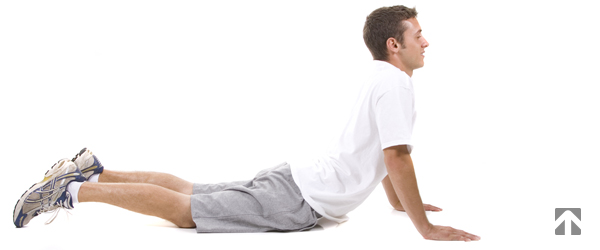In our last few posts we went over the basics of posture—why it is so important, what it looks like, and finally, some exercises, stretches, and tips to help you maintain it. But that is only about creating and maintaining good posture. What can you do if your back is already hurting and changing your posture isn’t enough to fix it?
You can start by reading over this list of do’s and don’ts for lower back pain. These tips might seem obvious at first, but you’ll be surprised to find them on the don’ts list. That’s right. Some of the stretches that you’d think are doing your back a favor are actually harming you more!
You can change the way you move, work, and live in general. Create an ergonomic workstation in your office. Make your desk height adjustable, make your keyboard move with you, and get out and move around when you can. With an ergonomic workstation at your office, you are one step closer to being pain-free.
But first, let’s discuss how to actually get rid of that back pain:
DO
- Partial crunches. Strengthen your core without injuring your back. Lie with your knees bent and your feet flat on the floor. Cross your arms over your chest or put your hands behind your neck. Then tighten your stomach muscles to raise your shoulders off the floor. Then slowly lower back down. Make sure your feet, tailbone, and lower back are in contact with the floor at all times to effectively relieve lower back strain.
- Hamstring stretches. Lie down flat on your back and extend your right leg straight into the air. If you can reach your toes—wow! No, just kidding. If you can reach your toes without bending your knee, hold onto them to stretch your leg and low back. If not, try wrapping a towel around your toes and hold onto the ends of that. Do this again with the other leg.
- Wall sits. With your back up against the wall, squat down as though you’re sitting in a chair. Try to have your quads parallel to the floor. Sit and hold for about a minute. This exercise is not necessarily a back exercise, but it is a great option for working out your legs without putting any strain or pressure on your back.
- Press-up back extensions. Lie on your stomach with your hands under your shoulders. Gently push up until you feel a nice stretch in your lower back. If you can, rest on your elbows or on your hands for a deeper stretch. If you’re familiar with yoga, this is a “cobra” or “baby cobra” pose.
- Pilates & Yoga. These two low-impact exercises are a wonderful way to strengthen and stretch your back and your body as a whole. Of course don’t do any positions that hurt your lower back more, go at your own pace, and modify if need be. There are even some great online yoga and Pilates “classes” that you can participate in. Check out MyYogaOnline.com for some back-friendly workouts.
- Walk. Walking and other aerobic, but low-impact workouts are great for low back pain. This includes swimming laps, strength training, and yoga. Check out this great post on why walking is so good for your back!
DON’T!
- Toe touches. It might sound like toe touches are a good way to stretch out a lower back that is paining you—it might even feel good at first—but beware, toe touches are dangerous for lower back pain! This movement puts greater stress on the disks and ligaments in your spine and can overstretch your lower back muscles and hamstrings.
- Sit-ups. While these exercises are great for strengthening abs, they are not great for anyone with lower back pain. Sit-ups tend to put a lot of pressure on the discs in your spine—perform simple crunches (see above) that will not hurt your back and are just as effective for upper abs.
- Leg lifts. This core-strengthening exercise is no good for somebody with back troubles. Instead, try lying on your back with one leg straight and the other leg bent at the knee. Then, slowly lift the straight leg up about six inches and hold it there for a beat, then lower it. Repeat this about 15 times and switch legs.
- Run. If your lower back is actively hurting you, do not go for a run. Running is a great exercise to improve posture when your back is healthy—but when it’s not, take a break and get back to it when your back is feeling better.
- Play sports. Okay, this is pretty broad, but do try to avoid any sports that make you bend or strain your back in any way if it is injured.. EX: tennis, racquetball, basketball, soccer, football… Okay pretty much most sports. Just lay off until your back is back in order.
- Avoid lifting. Yes, I do mean “don’t avoid lifting.” You should lift weights when your back is hurt—just make sure that you are doing it correctly and not using your back muscles. Rather, use your leg and arm muscles and focus on strengthening your back without weights (“supermans” are a great exercise for this).
Of course your ergonomic workstation will help you along the way, but for a back that’s paining you, remember these six dos and don’ts for exercising your lower back. Happy posture, everyone!
Do you use an ergonomic workstation? Have you noticed an improvement in the way your back feels? Share your experience below!





